Discover 11 hidden attractions, cool sights, and unusual things to do in Gandía (Spain). Don't miss out on these must-see attractions: Ducal Palace of Gandia, Archaeological Museum of Gandia, and Monasterio de Sant Jeroni de Cotalba. Also, be sure to include Collegiate Basilica of Gandia in your itinerary.
Below, you can find the list of the most amazing places you should visit in Gandía (Valencia).
Table of Contents
Ducal Palace of Gandia
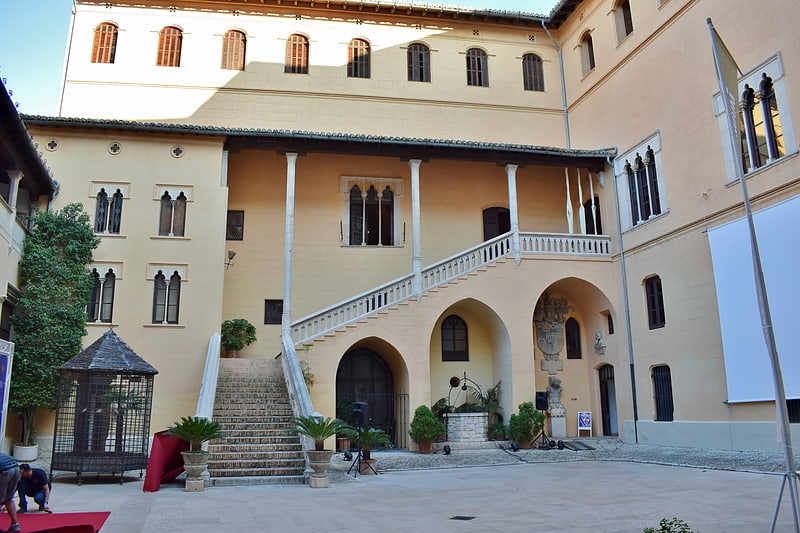
Also known as: Palacio Ducal de Gandía
Grand 14th-century ducal palace. The Ducal Palace of Gandia was, from the 14th century, the residence of the Royal Dukes of Gandía, and from 1485, the Borja family. It was the birthplace of Saint Francis Borja.
The oldest part of the building dates from the 15th century in Valencian Gothic style, but was restored and turned into a sanctuary by the Society of Jesus. It is attached to the wall that surrounds the city and has two gates, a Gothic one and one from the Renaissance.
Its remarkable interior has some interesting spaces, like the Golden Gallery, made in Baroque style, and the Crown Hall.
Initially the Palace was designed as a civil Gothic style urban castle and was ultimately transformed into a comfortable fortified palace. The main entrance to the Palacio Ducal is a robust door with a rounded arch, which together with the hallways are the oldest elements of the Gothic palace. You enter from this area and there is an imposing central parade ground with an impressive exterior staircase by which you ascend to the halls, among which the Baroque style Salón de Coronas and Galeria Dorada are notable.[1]
Address: Duc Alfons el Vell, 1, 46701 Gandía
Archaeological Museum of Gandia
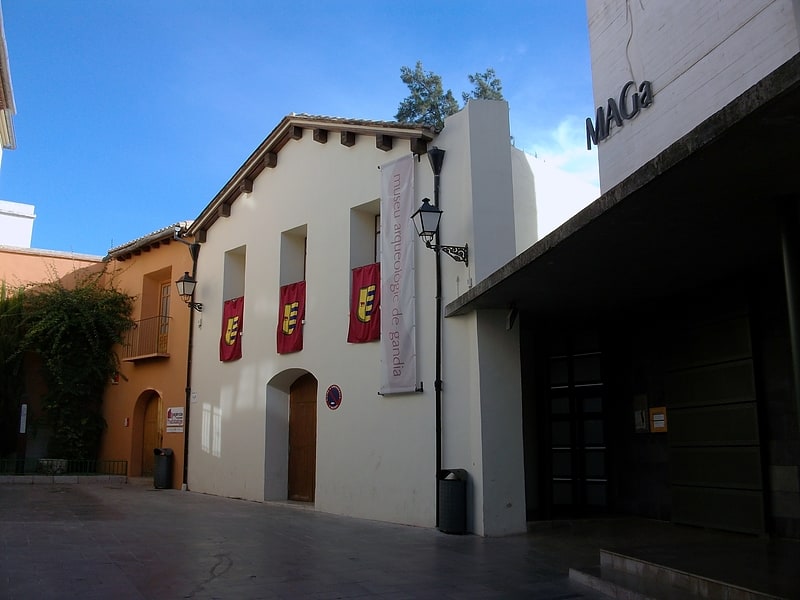
Also known as: Museo Arqueológico de Gandía
Museum in Gandia, Spain. The Archaeological Museum of Gandia is a center where is shown the archaeological heritage of La Safor and Gandia area, but especially, the materials of the Parpalló cave.
In 1972, with the collaboration of the Diputación de Valencia, was officially inaugurated the Museum, now known by the acronym Maga, and is located in the old building of the Sant Marc Hospital, in the South-East end of the medieval walls of Gandia, on the left bank of the river Serpis.
The Museum was closed to the public during the period from 1987 to 2003. In this period have been conducted research, documentation and restoration of the Museum's collections. It has a permanent exhibition on the regional prehistory, from the first inhabitants of the Paleolithic to the Iron Age.
It houses parts of some of the main archaeological sites of Europe, such as the Cueva de Bolomor, the Parpalló cave and the Maravillas cave.[2]
Address: Calle Hospital, 22, 46701 Gandia
Monasterio de Sant Jeroni de Cotalba
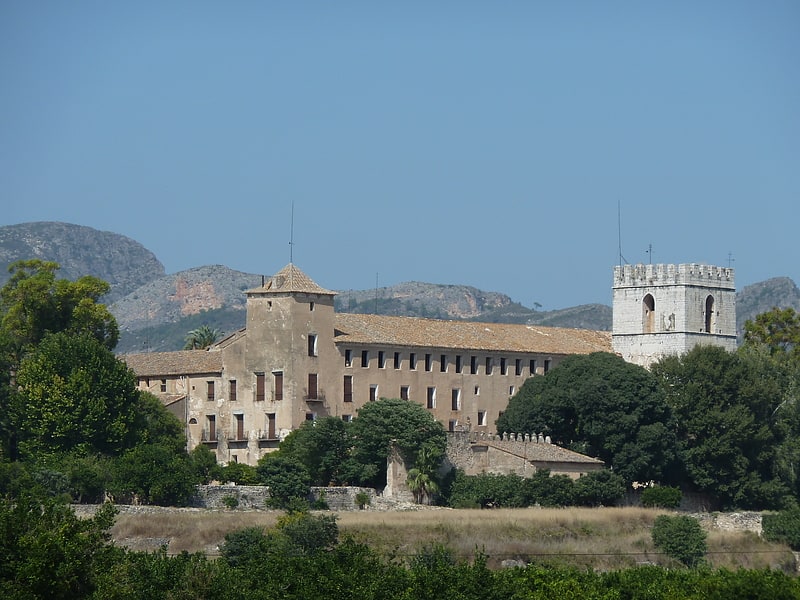
Also known as: Monasterio de San Jerónimo de Cotalba
Monastery dating to the 14th century. The Monastery of Sant Jeroni de Cotalba is a monastic building of Valencian Gothic, Mudéjar, Renaissance, Baroque and Neoclassical styles constructed between the 14th and 18th centuries, located in the municipal area of Alfauir, Spain, about 8 km. from the well-known city of Gandia.[3]
Address: Autovia Gandia-L_Olleria (CV-60), 46725 Alfauir
Collegiate Basilica of Gandia

Also known as: Colegiata de Santa María de Gandía
Catholic church in Gandia, Spain. The Collegiate Basilica of Santa Maria of Gandia, also known as "La Seu", is the principal church of the city of Gandia,. Construction commenced in the 14th century.
The Collegiate Church of Santa María is a Valencian Gothic construction, located in the centre Gandia. Construction began in the 14th century and finalised two centuries later. Thanks to Pope Alexander VI, the temple was raised to the category of Collegiate. In the year 1931 was declared National Historic Monument.
The church consists only of one central nave with lateral chapels adjacent to the walls. Its austere architectural style was once supplemented with rich interior decorations of altarpieces, paintings and sculptures, which disappeared during the Spanish Civil War.
The Seo of Gandia is in itself a small architectural jewel, where the Puerta Sur or the Puerta de Santa María and the Puerta de los Apóstoles are noteworthy, one of the first works of Damián Forment, precursor of the Spanish Renaissance.[4]
Oratory of the Borgias
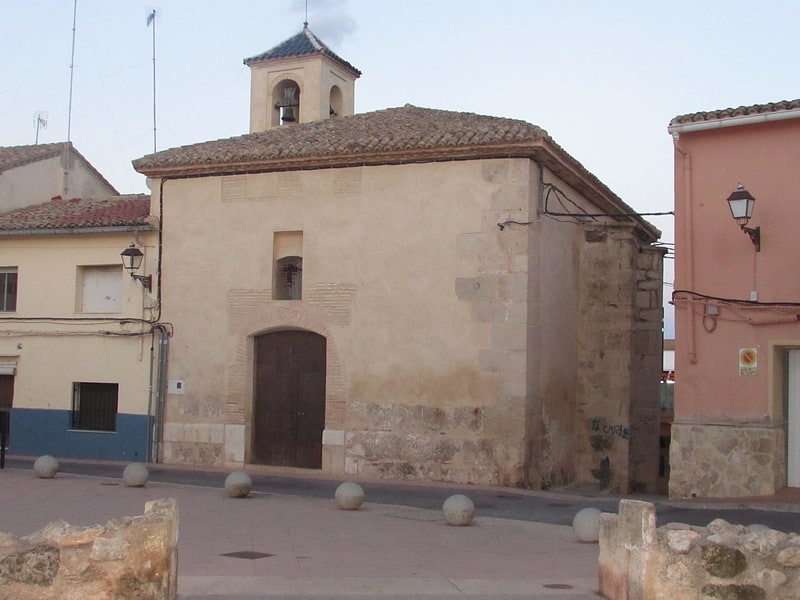
Also known as: Oratorio de los Borja
Church in Canals, Valencia, Spain. The Oratory of the Borgias or Church of the Tower is located in the municipality of Canals, Spain. It is a church built in early Valencian Gothic style, probably in the 13th century.
It is located in front of the Borgias Tower and has been reformed on several occasions. In the oratory is conserved a medieval table about the Last Judgment, attributed to the Master of Borbotó. In the oratory was kept a shield with the arms of the House of Borgia which was lost after the intervention of 1878. Originally, it was part of the palace complex of the Borgias at their ancestral power base in the Señorío de Torre de Canals.
The original invocation of the oratory was the True Cross. The building consists of a single nave's rectangular, flat head, walls of stone and mortar, covered gabled sustained by two diaphragm arches supported by pillars. The roof was partially of wood. The original major altar was lost during the Spanish Civil War. It is believed that at one of the tables of the major altar, it was represented the True Cross, a gift of the Pope Callixtus III, according to the historical tradition.[5]
Platja de L’Ahuir
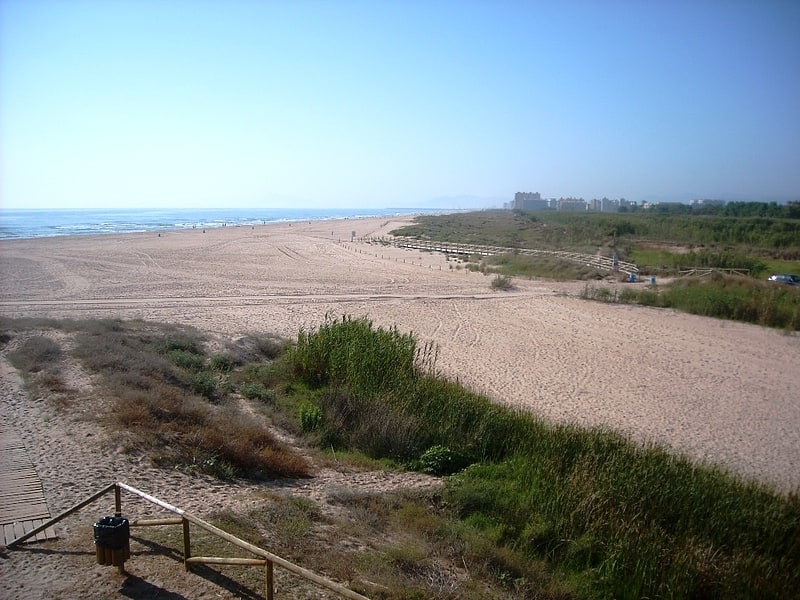
Beach
Convent of Santa Clara of Gandia
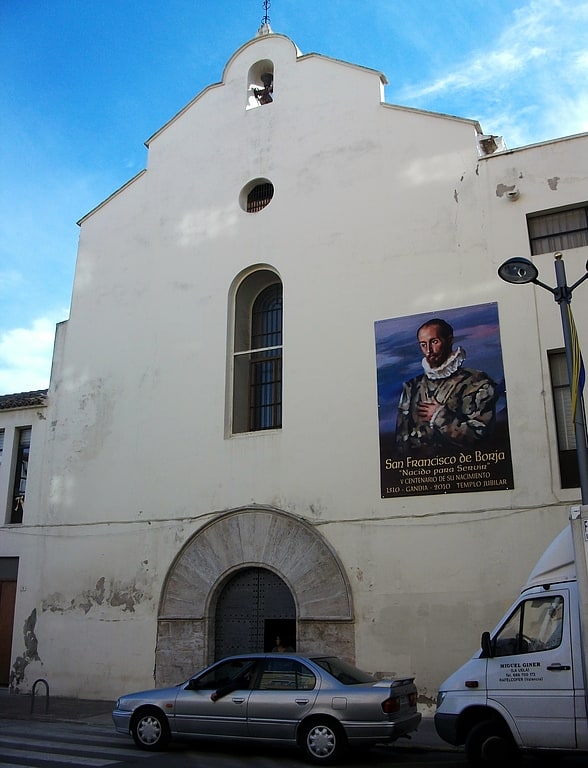
Also known as: Convento de Santa Clara
Convent in Gandia, Spain. The Convent of Santa Clara is 15th-century, Roman Catholic convent belonging to cloistered order of the Colettine Poor Clares, and located in the town of Gandia, province of Valencia, Spain. It is located in the centre of Gandia and at few meters from the Collegiate Basilica of Gandia, in María Enríquez de Luna square.[6]
Address: Calle Hospital, 22, 46701 Gandia
Church of San Nicolás
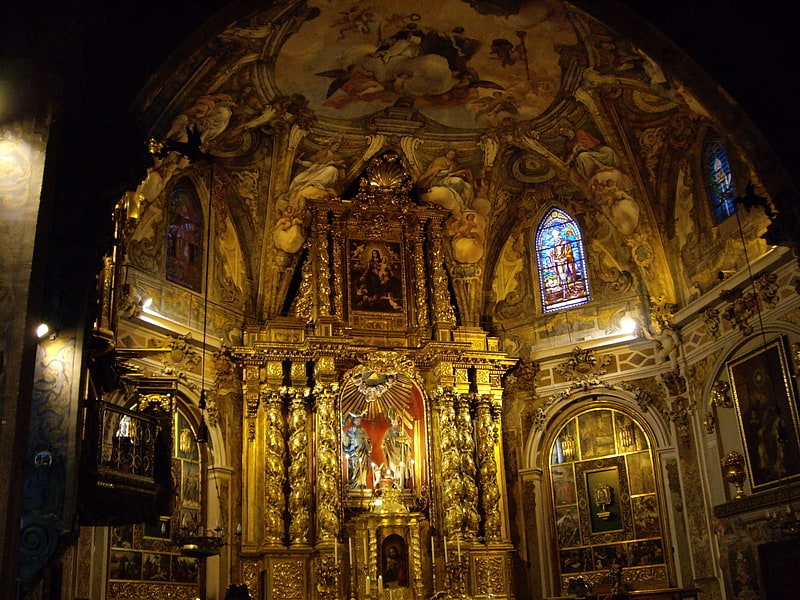
Also known as: Iglesia de San Nicolás de Bari y San Pedro Mártir
Church in Valencia, Spain. San Nicolás de Bari and San Pedro Mártir is a Valencian Gothic style, Roman Catholic parish church located in Valencia.[7]
El Real de Gandia
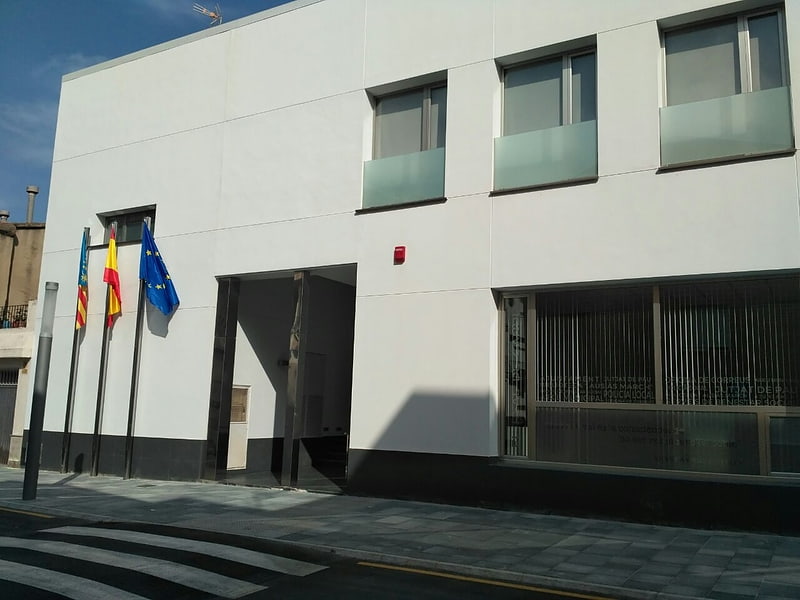
Also known as: Real de Gandía
Municipality in Spain. El Real de Gandia is a municipality in the comarca of Safor in the Valencian Community, Spain.[8]
Guardamar de la Safor
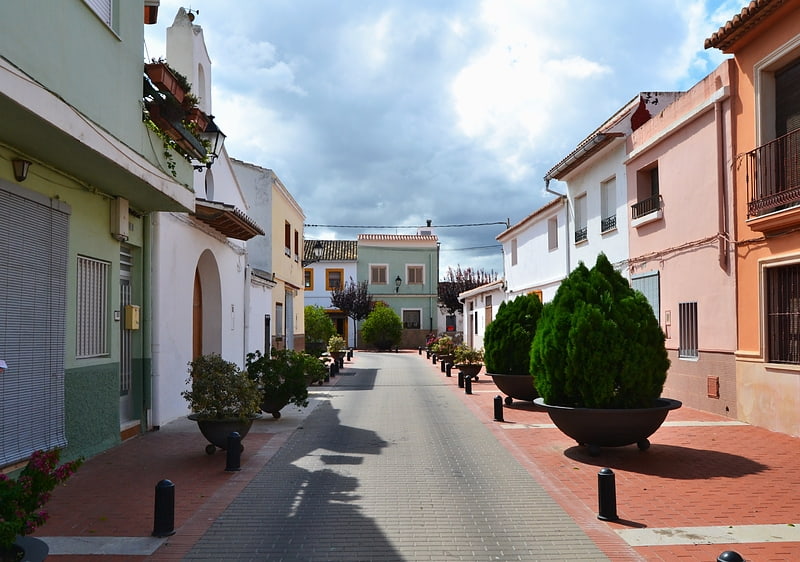
Municipality in Spain. Guardamar de la Safor is a municipality in the comarca of Safor in the Valencian Community, Spain.[9]
Torrelló del Pino
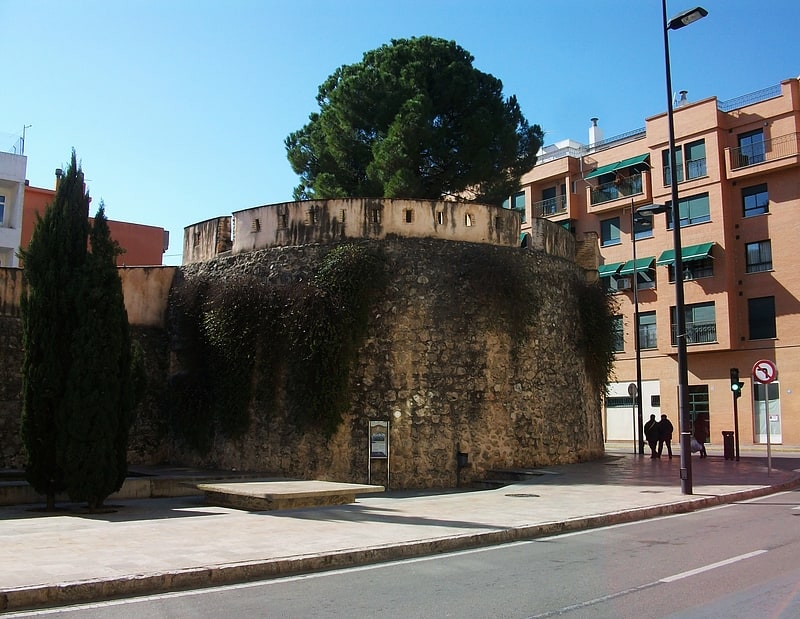
The Walls of Gandia, although practically disappeared almost entirely, its remains are listed as a cultural interest according to the Directorate General of Cultural Heritage of the Ministry of Tourism, Culture and Sport of the Generalitat Valenciana, with ministerial annotation number: R-I-51-0010759 and date of annotation 24 April 2002.